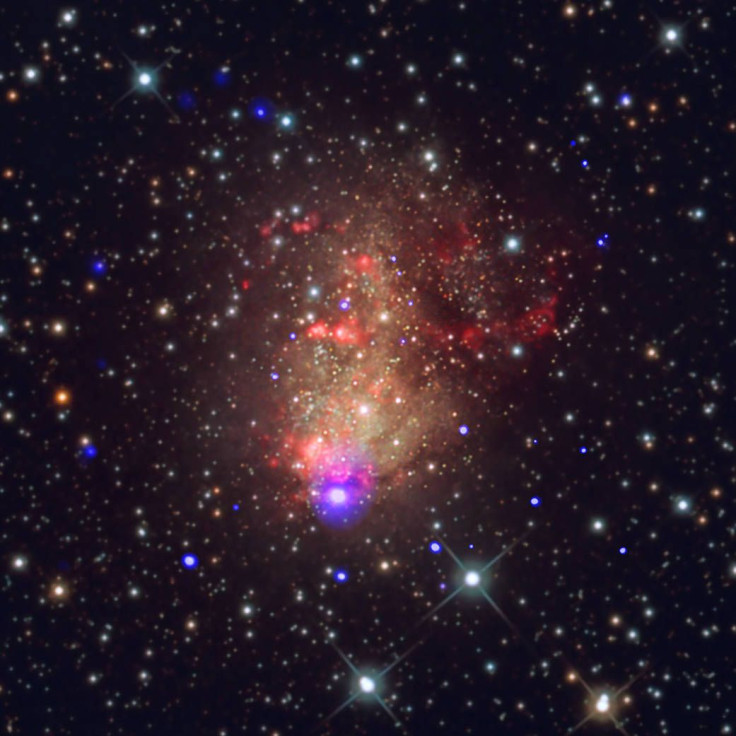Starburst Galaxy IC 10 Could Become Source Of Gravitational Waves

Gravitational waves, which had long been theorized, have been detected three times in the last two years, and if astronomers’ predictions are right, we could detect a whole lot more of them from a single source sometime in the future.
A starburst galaxy — so-called because of the intense activity of star formation taking place in it — named IC 10 was first discovered 130 years ago. Located about 2.2 billion light-years from Earth, the small galaxy is home to over a dozen black holes and neutron stars that exist in “X-ray binary” systems. The systems are referred to as such because they involve a black hole or a neutron star feeding gas off younger, massive companions and emitting large amounts of X-ray light.
Read: Halo Of Nearby Starburst Galaxy Seen In Detail, Could Help Understand Formation Of Galaxies
The X-ray light is produced when the bigger object orbiting the more compact black hole or neutron star sheds material under the force of gravity of its companion. As the material falls to form an accretion disk around the smaller object, the friction causes it to heat up to millions of degrees, producing X-ray emissions.
As the massive star loses material, it will eventually run out of fuel and then collapse in a spectacular and catastrophic supernova explosion, leaving behind another neutron star or black hole. If this happens, it would leave the binary system with one of the three scenarios: two black holes, two neutron stars, or one black hole and one neutron star. If the distance between the two objects reduces over time, the two could merge and the result of that would be gravitational waves.
It is already theorized that most, if not all, stars are born in pairs. That makes starburst galaxies like IC 10 good places to look for X-ray binaries, given the fast pace at which they form stars. In a statement Thursday, NASA explained why IC 10 is a good place to look for the kind of interaction between stars that would be necessary for the production of X-ray binaries.
“The young stars in IC 10 appear to be just the right age to give a maximum amount of interaction between the massive stars and their compact companions, producing the most X-ray sources. If the systems were younger, then the massive stars would not have had time to go supernova and produce a neutron star or black hole, or the orbit of the massive star and the compact object would not have had time to shrink enough for mass transfer to begin. If the star system were much older, then both compact objects would probably have already formed. In this case transfer of matter between the compact objects is unlikely, preventing the formation of an X-ray emitting disk,” NASA said in the statement.
Read: New ESA Mission Will Detect Gravitational Waves Using Satellites In Space
The space agency’s Chandra X-ray Observatory found 110 sources of X-ray in IC 10, of which over 40 can be seen in visible light as well. Of those, 16 contain “blue supergiants,” which are the kind of young, massive stars that are companions to the denser black holes or neutron stars. Most of the remaining X-ray sources contain less massive stars, and several objects also show a large variation in their X-ray emissions, which could mean the binary companions are interacting violently.
© Copyright IBTimes 2025. All rights reserved.





















